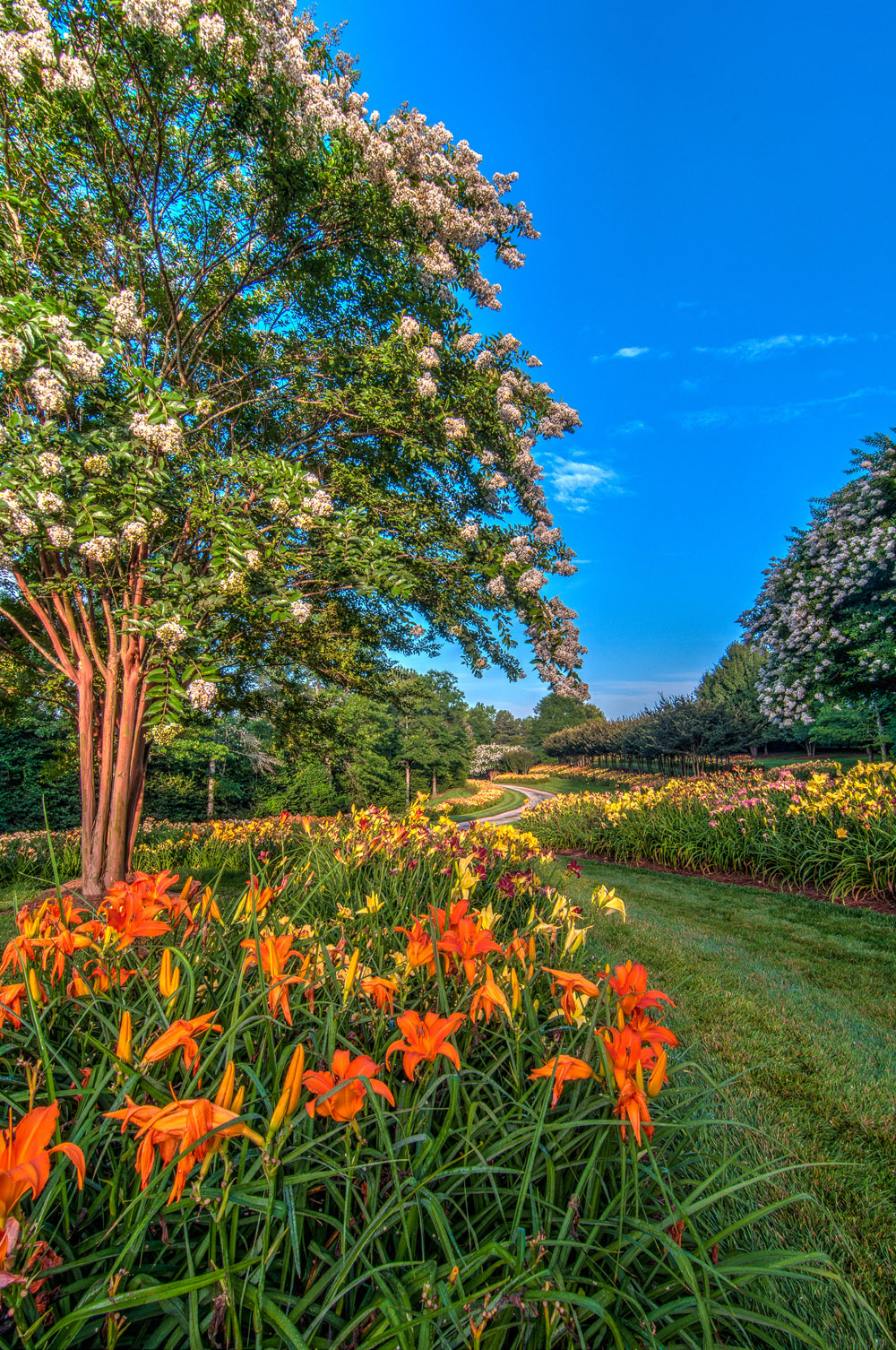Daylilies: Stars of Summer Gardens
When it comes to summer color in Georgia gardens, daylilies are hard to beat. They are easy to grow, prolific, offer brilliant blooms over a long period of time, tolerate some drought, are mostly free of pest and disease problems, and look great in all types of gardens. These hardy perennials persist in the landscape for years with a minimum of care.

At Gibbs Gardens, there are 300,000 daylily blooms of more than 500 varieties. The early blooming selections begin flowering in June, and the latest flower in August. By planting early, mid and late blooming types, you will have color for months.

It’s interesting to note that the scientific name for daylily, Hemerocallis, comes from two Greek words meaning “beauty” and “day.” This aptly describes daylily blooms, which last for one day. The good news is most daylily plants produce a multitude of flowers (from a single plant) over a period of weeks. Some varieties are repeat bloomers, while others flower once in a season.
A Rainbow of Colors

Beyond yellow and orange, which many people associate with daylilies, these beauties come in a rainbow of colors. From the palest (almost white) to the most vibrant, blossoms may be pink, red, crimson, purple, almost true-blue or a blend of colors. There are both single and double flowering types. Both the plants and blooms may be dwarf, tall, large or small.

Companions
Daylilies are effective in groups or as companions with shrubs, perennials and annuals. If planted under trees, make sure they receive adequate moisture (due to root competition from trees). Daylilies provide an effective groundcover for a sunny slope.

In the summer garden, combine them with roses, butterfly bush, Chaste tree or perennials like Asteromea mongolica, the Mongolian aster, garden phox, Phlox paniculata, lambs ears, salvias or wormwood, Artemesia ‘Powis Castle.’ Add them as a complement for annuals including spider flower, Cleome, Pentas, also known as star flower, Scaevola, called fan flower, and Euphorbia ‘Diamond Frost.’
Care and Feeding
1. Choose a site that receives a minimum of 4 to 6 hours of direct sun per day.
2. Plant them in soil that is moist but well drained. Avoid soggy soils.
3. Space individual plants 18 to 24 inches apart.
4. Plant early, mid and late blooming types for a long season of flowers.
5. Add compost if the soil is too sandy or has a high percentage of clay (does not hold water or holds too much water).
6. Apply 1 to 2 inches of mulch to help control weeds.
7. Take a soil test. This will help you decide which fertilizer to use.
8. Apply a granular 10-10-10 fertilizer in the spring. Apply another application in late summer or fall if needed.
9. Water plants deeply (8 to 10 inches) in the early morning. Avoid overhead watering, especially late in the day. This reduces spots on flowers and potential problems.
10. Daylilies will grow happily in pots; just make sure to give them plenty of space and water on a regular basis.
11. Divide clumps every three to five years. This keeps plants vigorous and productive. The best time to divide mature clumps is in late summer after they finish blooming.
Visit Gibbs Gardens in Ball Ground, Georgia, to see the incredible variety of summer blooms. Check the website at gibbsgardens.com for a full schedule of events.




